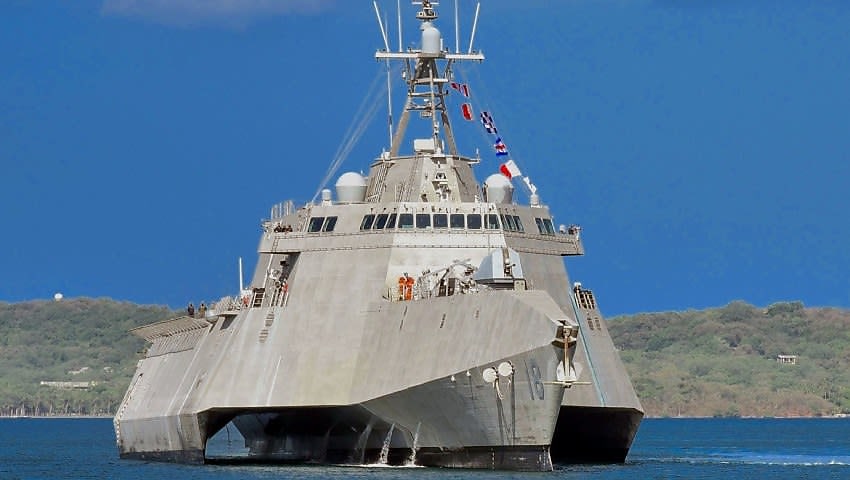Sacrificing the size and scale of the US military to prioritise the acquisition of yet-to-be realised capabilities may leave the US military unable to win a peer-to-peer conflict, researchers have warned.
To continue reading the rest of this article, please log in.
Create free account to get unlimited news articles and more!
Sacrificing the scale and size of the US military to favour the acquisition of technologies that may still be years away may leave the US ill-prepared for a conflict with China, analysts have warned.
According to Mackenzie Eaglen — senior fellow at the American Enterprise Institute — in War on the Rocks this week, US military commanders have sought to trade off the size of the nation’s military and the scale of its industrial capacity under an assumption that China will not attempt to seize Taiwan in the near term.
The researcher warns that this is not only contrary to recent trends but will leave the US worse off having reduced the quantity of hardware that the country can field in the event of a war.
“The Pentagon’s 2023 budget request seeks to build just eight new Navy ships while cutting 24. The five-year plans would have the Navy continue to shrink down to 280 ships by fiscal year 2027 — the same year defense civilians say the force must be ready to defend Taiwan,” Eaglen wrote.
The prioritisation of technological capability over the size of the military has the following shortcomings, according to the researcher.
“Cutting vast amounts of legacy weapons to pay for bets on developmental technologies suffers from several flaws. First, it discounts developmental risk and focuses on technology before operational concepts. Second, it ignores massive, deferred modernisation bills coming due now. And third, it underinvests in sustainable equipment choices,” she maintained.
Eaglen argues that this reduction in available hardware has a detrimental impact on US military readiness, with professionals unable to sufficiently train for their roles.
“Fewer airframes to employ means pilots fly less, which leads to reduced readiness. In fiscal year 2021, active-duty pilots averaged 10.1 flying hours per month, putting them at 121.2 hours per year. That is about 80 fewer hours than the number that the Air Force believes necessary for peak readiness.”
Of course, as Donald Rumsfeld’s adage goes, “You go to war with the army you have, not the army you might want.” It would appear thus that reliance on technological leaps in the future would place both the yet-untested capabilities as well as the extra units of hardware in the “might want” camp. With a nearing window of conflict, decommissioning tested capabilities under budget re-allocations is a risky strategy.
Focus on the development of new capabilities as opposed to the expansion and acquisition of existing technologies also has detrimental impacts on industry, worsening the valley of death for large and small defence businesses alike.
“Moreover, the FY23 budget contains the largest research, development, testing, and evaluation (RDTE) request in DOD history, with funding requests of $130 billion for RDTE and $146 billion for procurement,” the military fellows at the Atlantic Council recently wrote in a blog post.
“Focusing too much on RDTE at the expense of procurement contributes to the “valley of death” — or the arduous journey commercial companies take to win DOD contracts — further underscoring that DOD does not have an innovation problem, but rather an innovation adoption problem.”
With the risk of peer-to-peer conflict growing, balance is paramount.

 Login
Login







